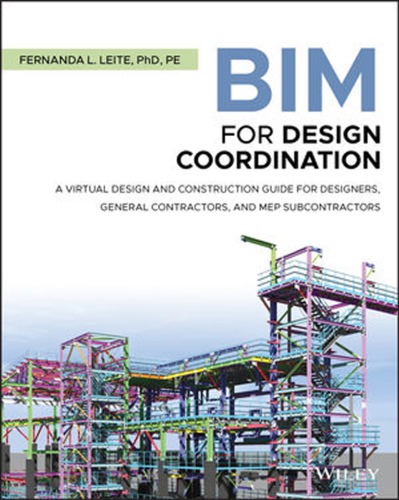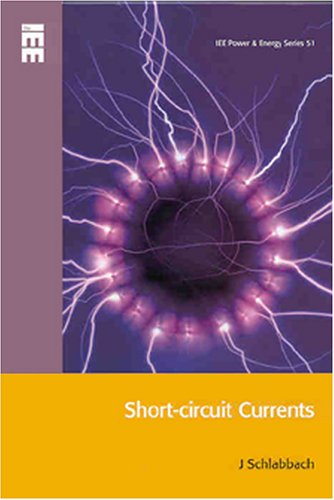| Book Name: | Advances in Thin-Film Solar Cells by I. M. Dharmadasa |
| Language: | English |
| Format: | |
| Free Download: | Available |
Advances in Thin-Film Solar Cells by I. M. Dharmadasa | PDF Free Download.
| Book Details : | |
|---|---|
| Language | English |
| Pages | 243 |
| Format | |
| Size | 7.67 MB |
Advances in Thin-Film Solar Cells by I. M. Dharmadasa

Thin-Film Solar Cells Contents
- Photovoltaic Solar Energy Conversion
- Status Report on Solar Energy Technologies
- Electrochemical Deposition of Solar Energy Materials
- Background of the CdTe Solar Cell and the New Device Concept
- Extension of the New Model to CIGS Thin-Film Solar Cells
- Effective Harvesting of Photons
- Multi-Layer Graded Bandgap Solar Cells
- Solar Cells Active in Complete Darkness
- Effects of Defects on Photovoltaic Solar Cell Characteristics
- A Future Dominated by Solar Energy
- Is Fermi-Level Pinning Affecting GaAs-Based Solar Cells?
- Thoughts on Future Directions of Thin-Film Solar Cell Research and Development
Preface to Advances in Thin-Film Solar Cells PDF
Sunlight was first converted into electricity by Edmund Becquerel in 1839, but until the 1950s, no considerable development had taken place.
However, during the two decades of the 1950s and the 1960s, Si-based solar cells were developed, manufactured, and used in applications such as satellites and remote communication stations.
The first oil crisis, in the early 1970s, gave a huge push to the search for alternative energy conversion methods, and researchers actively searched for new materials and low-cost device structures.
As a result, thin-film solar cells based on III-V compounds (GaAs and InP), amorphous Si, CdTe, and CuInGaSe2 (CIGS) were introduced to mainstream solar energy conversion. In the early 1990s, dye-sensitized solar cells were introduced, and organic solar cells came in the early 2000s.
With the renewed interest in nanomaterials, researchers worldwide are exploring the ways of using new materials in solar cell devices.
At present, all these photovoltaic (PV) fronts are moving toward producing low-cost and high-efficiency solar cells to convert sunlight into electricity.
The main hurdle in the rapid market penetration of solar energy applications is their high cost. Although there are active research programs to reduce manufacturing costs and increase conversion efficiencies, the progress is painfully slow for various reasons—one reason being the lack of a deeper understanding of material issues and physics behind solar cell devices.
This book does not deal with well-documented semiconductor properties and device principles but presents the latest developments and advances in thin-film solar cells, with an introduction to the most required background knowledge.
The targeted audience will be undergraduate and postgraduate students in science and engineering; electronic device researchers in chemistry, material science, physics, mathematics, and engineering; and PV module developers and technologists in the industry.
This book concentrates mainly on advances in thin-film solar cells based on CdTe-, CIGS-, and GaAs-based devices, but the ideas are equally applicable to all thin-film solar cells.
Chapter 1 of this book introduces solar energy conversion to all readers in a simple manner with the aid of diagrams, references, and animations placed on the author’s website. The next chapter provides a brief status report on PV technology.
The main barrier in the PV sector is the high manufacturing cost due to the use of expensive materials (Si and III-V compounds) and the high energy consumption during materials growth and device processing.
The initial high capital cost of equipment also exacerbates this situation. As a solution to this, a low-cost and scalable materials growth technique (electrochemical deposition) for II-VI and alloy compounds will be described in chapter 3.
This growth method is also a suitable low-cost technique for growing nanomaterials for various other applications in nanotechnology.
In all solar cells, two electrical contacts are needed to extract the photo-generated charge carriers from the device and, hence, these metal/semiconductor (MS) interfaces play a very important role in the overall performance.
Chapter 4 summarises the most striking recent breakthroughs which improved the understanding of PV action in thin-film solar cells.
This chapter describes the history of the CdTe solar cell, the application of new ideas to this device, the formation of a new concept to describe the solar energy conversion process, and the way forward for the development of the device.
Chapter 5 extends the applicability of the Fermi-level pinning concept to CIGS-based solar cells. The next three chapters are devoted to revisiting the current practice in tandem solar cells based on tunnel junctions and the use of multi-layer graded bandgap device structures in solar energy conversion.
The latter device design has been experimentally tested with a well-researched GaAs/AlGaAs system. This device has shown the highest reported open-circuit voltage of 1175 mV with the highest achievable fill factor of ∼0.86 for a single device.
The new device concept is mainly based on a set of defects within these devices, and chapter 9 describes the effects of defects on the performance of solar cells.
It also describes the way forward for dealing with defects in order to achieve higher performance in devices. Chapter 10 is for the general public and describes the scenario of a future dominated by solar energy.
This is based on the author’s two decades of public understanding of science activities and real projects carried out on the ground.
The author described the solar village project designed and piloted successfully, and the replication plans are indicated in this chapter.
Two short chapters are included at the end of this book— chapter 11 presents the evidence collated to date for Fermi-level pinning in GaAs-based solar cells, and chapter 12 indicates some thoughts on future directions of thin-film solar cell research.
I am grateful to all the people who have supported me to develop and progress in this sector. My Ph.D. supervisors, late Sir Professor Gareth Roberts and Professor Mike Petty at Durham University put me on the right track at the very beginning, in the late 1970s.
Working with active scientists in the field, Professors R. H. Williams and E. H. Rhoderick, enabled me to be well established in this field during my four-year postdoctoral research in University College Cardiff, in the early 1980s.
Since then, I have worked on and learned the subject from numerous colleagues from chemistry, physics, mathematics, and engineering disciplines in academia and the industry (BP Research, Sunbury).
During the last two decades of my academic career at Sheffield Hallam University, many postdoctoral researchers, 14 Ph.D. students, and numerous visiting researchers contributed to this work in order to understand the chemistry and physics behind these complex materials and devices.
University lecturing on relevant subjects like electricity and magnetism, thermodynamics, solid-state physics, quantum mechanics, high-specification materials, device design and manufacture, and Si processing in a cleanroom environment for over three decades helped me in understanding these complex devices.
This accumulated knowledge, new breakthroughs, and recent advances are presented in this book to share with the present and future scientists, engineers, and the general public.
I am grateful to my immediate family for their help and support during this journey. In particular, I thank Dahiru Diso, Osama Elsherif, Ajith Weerasinghe, Obi Kingsley Echendu, Vijay Bin Fauzi, Tamara Dharmadasa, Ruvini Dharmadasa, and Asela Dharmadasa for their contributions during the preparation of this book.
I also thank Sidath Kalyanaratne and Nishith Patel for preparing some of the diagrams used in this book. Finally, this book is dedicated to my beloved parents, who worked hard to support me during my childhood with limited resources while living in a sun-rich environment in Sri Lanka.
I am hopeful that this book will contribute to reverse this situation for future generations by bringing prosperity to all the people who live wherever the sun is shining
Advances in thin-film solar cells
Author(s): I. M. Dharmadasa
Publisher: Pan Stanford Publishing Pte. Ltd;CRC, Year: 2018
ISBN: 9780429020841
Download Advances in Thin-Film Solar Cells by I. M. Dharmadasa in PDF Format For Free.
Related More Books
See More POST On : Engineering Books









![[PDF] Draw Buildings and Cities in 15 Minutes Draw Buildings and Cities in 15 Minutes pdf](https://www.freepdfbook.com/wp-content/uploads/2021/06/Draw-Buildings-and-Cities-in-15-Minutes-218x150.jpg)








![[PDF] Digital Image Processing An Algorithmic Introduction Using Java Digital Image Processing An Algorithmic Introduction Using Java](https://www.freepdfbook.com/wp-content/uploads/2022/06/Digital-Image-Processing-An-Algorithmic-Introduction-Using-Java.jpg)




![[PDF] 43 Years JEE ADVANCED + JEE MAIN Chapterwise & Topicwise Solved Papers 43 Years JEE ADVANCED (1978-2020) + JEE MAIN Chapterwise & Topicwise Solved Papers Physics PDF](https://www.freepdfbook.com/wp-content/uploads/2022/03/43-Years-JEE-ADVANCED-1978-2020.jpg)

![[PDF] Problems in Physical Chemistry for JEE (Main & Advanced) Problems in Physical Chemistry for JEE (Main & Advanced) Free PDF Book Download](https://www.freepdfbook.com/wp-content/uploads/2022/03/Problems-in-Physical-Chemistry-for-JEE-Main-Advanced.jpg)
![[PDF] Engineering Physics (McGraw Hill)](https://www.freepdfbook.com/wp-content/uploads/2021/05/bafc8c2685bb6823a9c56134f7fba5df.jpeg)

![[PDF] Engineering Chemistry By Shashi Chawla](https://www.freepdfbook.com/wp-content/uploads/2022/05/Theory-And-Practicals-of-Engineering-Chemistry-By-Shashi-Chawla-free-pdf-book.jpeg)
![[PDF] Chemistry: An Introduction to Organic, Inorganic & Physical Chemistry Chemistry: An Introduction to Organic, Inorganic & Physical Chemistry](https://www.freepdfbook.com/wp-content/uploads/2022/04/Chemistry-An-Introduction-to-Organic-Inorganic-Physical-Chemistry.jpg)
![[PDF] Essentials of Physical Chemistry Essentials of Physical Chemistry Free PDF Book by Bahl](https://www.freepdfbook.com/wp-content/uploads/2022/04/Essentials-of-Physical-Chemistry-bahl.jpg)
![[PDF] Biological control of plant-parasitic nematodes: soil ecosystem management in sustainable agriculture Biological control of plant-parasitic nematodes: soil ecosystem management in sustainable agriculture](https://www.freepdfbook.com/wp-content/uploads/2022/05/Biological-control-of-plant-parasitic-nematodes-soil-ecosystem-management-in-sustainable-agriculture.jpg)
![[PDF] Human Anatomy: Color Atlas and Textbook Human Anatomy: Color Atlas and Textbook Free PDF Book](https://www.freepdfbook.com/wp-content/uploads/2022/05/Human-Anatomy-Color-Atlas-and-Textbook.jpg)
![[PDF] Concepts of Biology Book [Free Download]](https://www.freepdfbook.com/wp-content/uploads/2022/05/Concepts-of-Biology.jpg)
![[PDF] Essentials of Biology [Free Download] Essentials of Biology Free PDF BOok Download](https://www.freepdfbook.com/wp-content/uploads/2022/05/Essentials-of-Biology-Free-PDF-Book-Downlaod.jpg)
![[PDF] Human Biology Book [Free Download]](https://www.freepdfbook.com/wp-content/uploads/2022/05/PDF-Human-Biology-Book-Free-Download.jpg)


